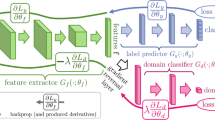Abstract
This study aims to improve the recognition rate of a recognizer for detecting cracks on concrete surfaces from image data. When developing a recognizer, a clean image is commonly used as training data. Therefore, the recognition rate decreases when blurred images not taken cleanly are used as test data. To improve the recognition rate, the training data were mixed with processed images. In experiment, a simple convolutional neural network was used to confirm the effect of data augmentation. Experimental results showed that adding blurred images to the training data improved the recognition rate for blurred images, regardless of how the images were blurred. For training data without blurred images, the recognition rate for strongly blurred images is about 75%. On the other hand, the recognition rate improves to about 95% for training data that includes strongly blurred images. Thus, including images in which strong blur filters are used for data augmentation is effective in improving the recognition rate of blurred images.



Similar content being viewed by others
Explore related subjects
Discover the latest articles and news from researchers in related subjects, suggested using machine learning.Data Availability
https://data.mendeley.com/datasets/5y9wdsg2zt/2
References
Ministry of Land, Infrastructure, Transport and Tourism, Roads Bureau, National Roads and Engineering Division (2019) Road Tunnel Periodic Inspection Procedure, March 2019
Kimura U, Krau A, Sakurai T (2018) Automatic crack detection in infrastructure inspection using fully convolutional network. IPSJ Trans Math Model Appl 11(1):12–20 (Japanese)
Chiyonobu M, Iida S, Ishikawa Y, Nishikino M, Kawakami R, Joe K (in press) Estimating concrete interior using a 3D-CNN. Advances in Parallel and Distributed Processing, and Applications
Feng MQ, De Flaviis F, Kim YJ (2002) Use of microwaves for damage detection of fiber reinforced polymer-wrapped concrete structures. J Eng Mech, 128(2)
Akkaya Y, Voigt T, Subramaniam KV (2003) Nondestructive measurement of concrete strength gain by an ultrasonic wave reflection method. Mater Struct 36:507–14
Nakamura S, Takaya S, Maeda Y, Yamamoto T, Miyagawa T (2023) Spalling time prediction by using infrared thermography. Japanese J JSCE E2, 69(4):450–461
Cha YJ, Choi W, Suh G, Mahmoudkhani S, Büyüköztürk O (2017) Autonomous structural visual inspection using region-based deep learning for detecting multiple damage types. Comput-Aided Civ Infrastruct Eng 33(9):731–747
Cha YJ, Choi W (2017) Deep learning-based crack damage detection using convolutional neural networks. Comput-Aided Civ Infrastruct Eng 32(5):361–378
Kim B, Cho KS (2018) Automated vision—based detection of cracks on concrete surfaces using a deep learning technique. Sensors 18(10).
Concrete Crack Images for Classification. https://data.mendeley.com/datasets/5y9wdsg2zt/2. Accessed 6 Sept 2023
PyTorch. https://pytorch.org/. Accessed 6 Sept 2023
Acknowledgements
We would like to thank Editage (www.editage.jp) for English language editing.
Funding
The authors did not receive any financial support for this study.
Author information
Authors and Affiliations
Corresponding authors
Ethics declarations
Ethics approval
Not applicable.
Additional information
Publisher's Note
Springer Nature remains neutral with regard to jurisdictional claims in published maps and institutional affiliations.
Rights and permissions
Springer Nature or its licensor (e.g. a society or other partner) holds exclusive rights to this article under a publishing agreement with the author(s) or other rightsholder(s); author self-archiving of the accepted manuscript version of this article is solely governed by the terms of such publishing agreement and applicable law.
About this article
Cite this article
Ishikawa, S., Chiyonobu, M., Iida, S. et al. Improvement of recognition rate using data augmentation with blurred images. J Supercomput 80, 12154–12165 (2024). https://doi.org/10.1007/s11227-024-05901-8
Accepted:
Published:
Issue Date:
DOI: https://doi.org/10.1007/s11227-024-05901-8




